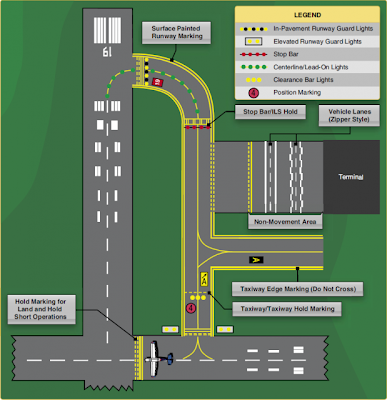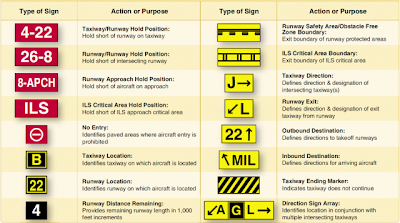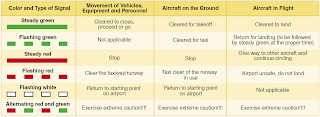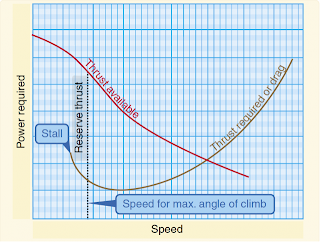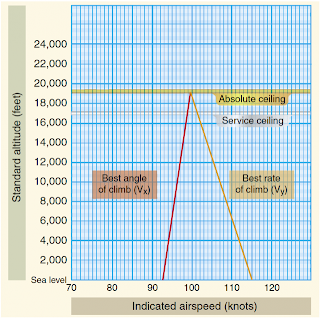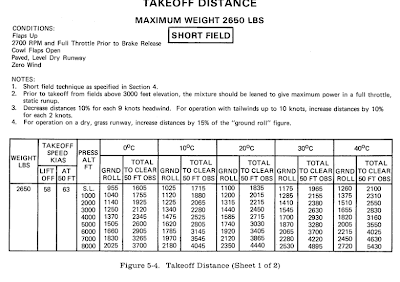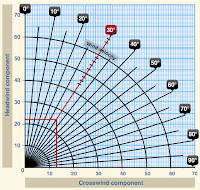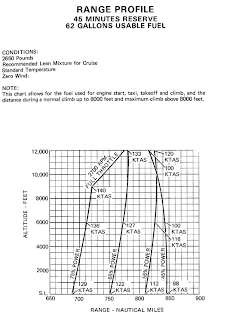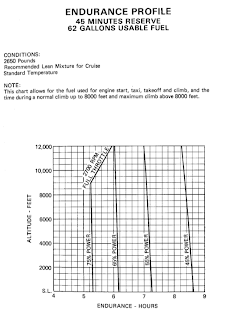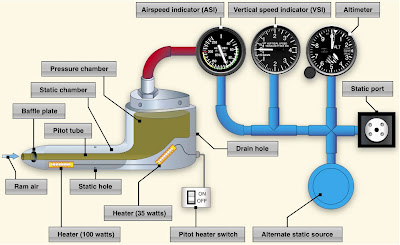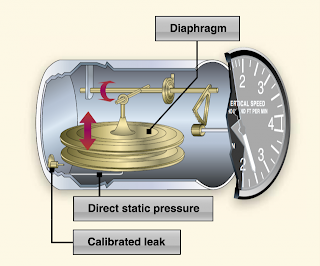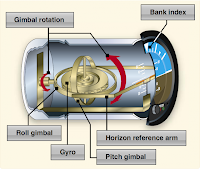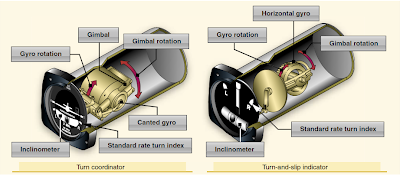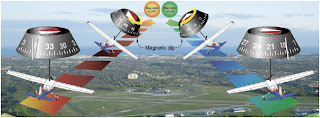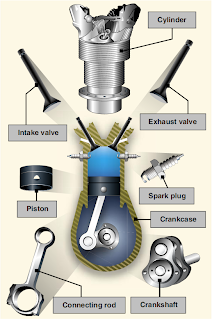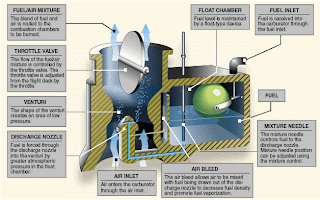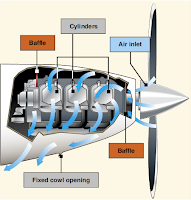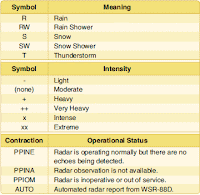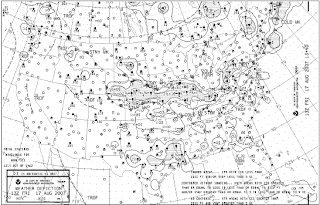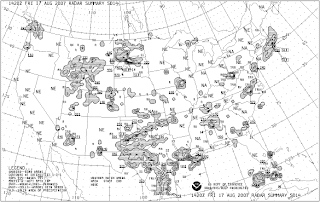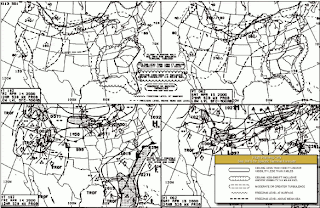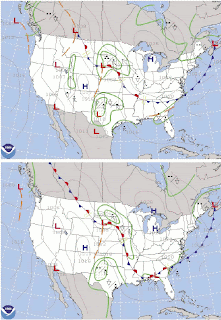Related to Airspace, there are two main types of airports - Towered and Nontowered. The main difference being that at towered airports, ATC is responsible for providing safe, orderly flow of traffic. At nontowered airports, a Common frequency (CTAF) is provided to announce position. While strongly recommended, it is not required.
Info for airport frequencies can be found on Aeronautical Charts, in the A/FD, or NOTAMS.
The following link goes to a set of flashcards for Airport Markings
http://www.aopa.org/asf/publications/flashcards/RWcards_lo.pdf
Runway Markings
Basic VFR runways may just have centerline markings and a runway number.
•Runway numbers are referenced to magnetic north.
•Displaced Thresholds are to allow obstacle clearance
•Blast Pad is an area where propeller or jet blast can dissipate before causing a hazard
Signage
Signs fall into 6 categories
-Mandatory Instructions (white on red)
-Location signs (yellow on black)
-Direction signs (black on yellow)
-Destination signs (black on yellow)
-Information (black on yellow)
-Runway distance remaining (White on Black)
Airport Lighting
Beacons
Operated from dusk til dawn or sometimes in IFR conditions.
Green/White = Civilian Land Airport
White/Yellow = Water Airport
White/Yellow/Green = Heliport
Two White / Green = Military
Approach Lighting
VASI = clearance within 10º of extended runway centerline and to 4 NM from threshold. Approach set at 3º on 2-bar VASI
3 bar VASI allows two glidepaths - one at 3º, the other 1/4º above lower glidepath
TRI-COLOR VASI = Red-Below Glidepath
Green-On Glidepath
Amber-Above Glidepath. Also slightly below glidepath
PAPI = set at 3º with indications of slightly high/slightly low. 3.2º/2.8º
Pulsating VASI = single unit projecting two-color visual approach path.
Steady White = on glidepath
Steady Red = Slightly Below
Pulsating Red = below glidepath (pulsations increase as plane descends further below glidepath)
Pulsating White = Above glidepath
Runway Lighting
Runway End Identifier Lights (REIL) = Pair of synchronized flashing lights on each side of threshold.
Edge Lights = HIRL/MIRL/LIRL. Lights are white unless on instrument runways when amber lights are used for last 2000 ft (or half of the runway) whichever is less. End of runway are red.
In-Runway Lighting
Runway Centerline Lighting (RCLS) - spaced at 50 ft intervals. Centerline white until last 3000 ft. White/Red for next 2000 ft. Last 1000 ft is red.
Touchdown Zone Lights (TDZL) - installed on some precision approach runways. Two rows of transverse light bars. White lights start 100 ft beyond landing threshold and extend to 3000 ft beyond landing threshold or to midpoint of runway, whichever is less.
Taxiway centerline lead-off lights - Alternate green/yellow lights beginning with green from runway centerline to beyond runway hold position or ILS/MLS critical area (whichever is more restrictive)
Taxiway centerline lead-on lights - Also Green/Yellow
LAHSO Lights - Row of pulsing white lights across the runway at hold short point.
Obstruction Lights
Red obstruction lights - flash or emit steady red color during night. Painted orange/white during day.
White obstruction lights - flash high intensity white lights during daytime
Dual lighting - combination of flashing red beacons and steady red lights during night and flashing white during day.
Wind Direction Indicators
Generally weather recordings or ATC will provide you with wind or runway info, but in absence of this . . .
Wind Sock/Wind Cone, Tetrahedrons, or Wind Tees. Wind Tees and Tetrahedrons can be positioned to indicate runway in use, and do not necessarily indicate wind. Wind sock or cone will always show wind direction.
Segmented Circle shows direction of traffic pattern flow. Prop aircraft generally have patterns at 600 ft AGL - 1500 ft AGL. Higher performance aircraft have patterns from 1500 ft AGL and up.
Radar Services
ATC Radar Beacon System (ATCRBS) - Secondary Surveillance Radar
Transponder = Airborne portion of secondary surveillance radar system.
Light Gun Signals
Runway Incursions
Can occur for any number of reasons
-Failure to heed ATC instructions
-Unfamiliar with airport layout
-Failure to check for landing or intersecting traffic
-Other factors such as vehicles on runway/animals
Tuesday, August 7, 2012
Monday, August 6, 2012
Performance
Performance of our aircraft helps us operate the plane safely and to its best ability. This could be a calculation of safe takeoff distance or the power settings that will give us the maximum speed with least fuel burn. There are various factors to consider.
Atmospheric Influence
Air, though light, has mass. Its density decreases with altitude or a decrease in pressure. Less dense air reduces lift (less force on airfoils), power (engine takes in less air), and thrust (propeller less efficient).
Standard Pressure / Standard Temp.
Standard pressure referenced at 29.92" Hg. Standard Temp. referenced at 15ºC
Standard Lapse Rate is 2ºC per 1000 ft. and 1" Hg per 1000 ft. up to 10,000 ft.
All performance charts are referenced to standard atmospheric conditions, so corrections must be taken into account
Pressure Altitude - basically a theoretical altitude where pressure would be 29.92.
Density Altitude - Pressure Alt. corrected for nonstandard temperature. This is the altitude that the plane "thinks" it is at and will perform in accordance to.
•Density Altitude increases with high elevations, warmer temperatures, high humidity, and low pressure.
•Density directly proportional to pressure
•Water vapor lighter than air (less dense)
Performance
Straight & Level/Flight
•Parasite drag increases as the square of airspeed.
•Max flight speed is achieved when power or thrust required equals max power or thrust available.
Climb Performance
Power vs. Thrust
-Power is a unit of work per time
-Thrust is force that causes a change in the velocity of a mass
•Rate of Climb is a function of excess thrust.
•Difference between thrust and drag (excess power)
Service Ceiling- Aircraft unable to climb at rate greater than 100fpm
Absolute Ceiling - Aircraft cannot climb
Power loading - Total weight divided by rated horsepower. Helps determine takeoff/climb capabilities.
Wing Loading - Total weight divided by area of wing. This determines landing speed.
Range vs. Endurance -
Range is function of distance.
Endurance is function of time.
Max. Range occurs at L/D Max. Weight will alter this number.
Max. Endurance occurs at point where greatest ratio of Speed to Power Required exists.
Takeoff/Landing Performance
Factors -
Surface/Gradient - Charts assume smooth, dry, level, and paved surfaces. Conditions can be found in the A/FD. Gradient given in %. ie: a 3% gradient means a change of 3 ft for every 100 ft of runway.
Hydroplaning - Tires ride on thin sheet of water rather than surface. Braking control severely limited. Min. hydroplaning speed found by multiplying 9 x square root of tire pressure in psi.
Effects of Weight
Higher weight = greater speed necessary to produce lift, decrease in rate of acceleration, longer ground roll
Wind
Headwinds reduce takeoff/landing distance.
Tail winds increase them.
Air Density
Low pressure / air density requires greater ground roll to generate same aerodynamic forces. This requires a higher TAS to takeoff/land.
Landing
Increase in weight requires greater landing distance/speed. Braking force needed is increased.
•Factor in surprises such as ATC instructions to Land-and-Hold-Short, early base turns that will require diving to reduce altitude, etc.
Review of Speeds:
Indicated = read off ASI
Calibrated = Indicated corrected for installation errors
True = speed of aircraft in relation to air mass it's flying in
Equivalent = Indicated corrected for installation error and compressibility for that altitude
CHARTS
Charts are created when aircraft has a new engine, is in good working order, and often with a marketing person in the right seat taking notes.

Transport Category Airplane Performance
14 CFR parts 25 & 29. Guarantee safety margins.
•Require full temperature accountability
•Climb performance expressed as % gradient of climb rather than fpm
•Change in liftoff technique - allows reaching of takeoff safety speed after aircraft is airborne
Takeoff Considerations
By regulations, aircraft's takeoff weight has to accommodate longest of 3 distances: Accelerate-Go Distance, Accelerate-Stop Distance, and Takeoff Distance
V1=Decision Speed
Maneuver ends at 35' AGL
Accelerate Stop Distance = Distance required to accelerate to V1, then experience engine failure and continue to takeoff.
Accelerate-Stop Distance = Distance required to accelerate to V1, and abort takeoff at V1 using only brakes (no thrust reversers).
Takeoff Distance = Regular takeoff distance with all engines operable.
Atmospheric Influence
Air, though light, has mass. Its density decreases with altitude or a decrease in pressure. Less dense air reduces lift (less force on airfoils), power (engine takes in less air), and thrust (propeller less efficient).
Standard Pressure / Standard Temp.
Standard pressure referenced at 29.92" Hg. Standard Temp. referenced at 15ºC
Standard Lapse Rate is 2ºC per 1000 ft. and 1" Hg per 1000 ft. up to 10,000 ft.
All performance charts are referenced to standard atmospheric conditions, so corrections must be taken into account
Pressure Altitude - basically a theoretical altitude where pressure would be 29.92.
Density Altitude - Pressure Alt. corrected for nonstandard temperature. This is the altitude that the plane "thinks" it is at and will perform in accordance to.
•Density Altitude increases with high elevations, warmer temperatures, high humidity, and low pressure.
•Density directly proportional to pressure
•Water vapor lighter than air (less dense)
Performance
Straight & Level/Flight
•Parasite drag increases as the square of airspeed.
•Max flight speed is achieved when power or thrust required equals max power or thrust available.
Climb Performance
Power vs. Thrust
-Power is a unit of work per time
-Thrust is force that causes a change in the velocity of a mass
•Rate of Climb is a function of excess thrust.
•Difference between thrust and drag (excess power)
Service Ceiling- Aircraft unable to climb at rate greater than 100fpm
Absolute Ceiling - Aircraft cannot climb
Power loading - Total weight divided by rated horsepower. Helps determine takeoff/climb capabilities.
Wing Loading - Total weight divided by area of wing. This determines landing speed.
Range vs. Endurance -
Range is function of distance.
Endurance is function of time.
Max. Range occurs at L/D Max. Weight will alter this number.
Max. Endurance occurs at point where greatest ratio of Speed to Power Required exists.
Takeoff/Landing Performance
Factors -
Surface/Gradient - Charts assume smooth, dry, level, and paved surfaces. Conditions can be found in the A/FD. Gradient given in %. ie: a 3% gradient means a change of 3 ft for every 100 ft of runway.
Hydroplaning - Tires ride on thin sheet of water rather than surface. Braking control severely limited. Min. hydroplaning speed found by multiplying 9 x square root of tire pressure in psi.
Effects of Weight
Higher weight = greater speed necessary to produce lift, decrease in rate of acceleration, longer ground roll
Wind
Headwinds reduce takeoff/landing distance.
Tail winds increase them.
Air Density
Low pressure / air density requires greater ground roll to generate same aerodynamic forces. This requires a higher TAS to takeoff/land.
Landing
Increase in weight requires greater landing distance/speed. Braking force needed is increased.
•Factor in surprises such as ATC instructions to Land-and-Hold-Short, early base turns that will require diving to reduce altitude, etc.
Review of Speeds:
Indicated = read off ASI
Calibrated = Indicated corrected for installation errors
True = speed of aircraft in relation to air mass it's flying in
Equivalent = Indicated corrected for installation error and compressibility for that altitude
CHARTS
Charts are created when aircraft has a new engine, is in good working order, and often with a marketing person in the right seat taking notes.

Transport Category Airplane Performance
14 CFR parts 25 & 29. Guarantee safety margins.
•Require full temperature accountability
•Climb performance expressed as % gradient of climb rather than fpm
•Change in liftoff technique - allows reaching of takeoff safety speed after aircraft is airborne
Takeoff Considerations
By regulations, aircraft's takeoff weight has to accommodate longest of 3 distances: Accelerate-Go Distance, Accelerate-Stop Distance, and Takeoff Distance
V1=Decision Speed
Maneuver ends at 35' AGL
Accelerate Stop Distance = Distance required to accelerate to V1, then experience engine failure and continue to takeoff.
Accelerate-Stop Distance = Distance required to accelerate to V1, and abort takeoff at V1 using only brakes (no thrust reversers).
Takeoff Distance = Regular takeoff distance with all engines operable.
Sunday, August 5, 2012
Aircraft Instruments
Being able to interpret what the airplane is doing is crucial to safe flying. Understanding which system powers which instruments is also comforting when you know which instruments may be relied on in a failure.
Pitot-Static Instruments
The pitot-static system consists of the airspeed indicator, the altimeter, and the vertical speed indicator (VSI).
The pitot tube measures Dynamic Pressure for the Airspeed Indicator. It is an indication of how much air is flowing over the aircraft - this could be from moving through still air or experiencing strong headwinds.
The back of the pitot tube allows moisture to exit.
In order to show accurate readings when altitude changes, a static chamber must also be vented to the instrument.
The Altimeter and VSI both use just the static port and its connected lines for readings.
Altimeter
Operation: A stack of aneroid wafers is free to expand and contract with changes in pressure. Higher pressure presses down. Mechanical linkages connect wafer to needles on indicator face.
The instrument would only be accurate, however, when temperature is standard and pressure is standard. Thus, there is a knob on the instrument that allows us to manipulate changes in barometric pressure. We can select the new barometric pressure using the Kollsman Window.
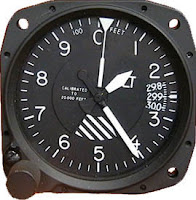
This does not, however, compensate for changes in temperature.
Types of Altitude:
Indicated = Read off the altimeter
True Altitude = Vertical distance above sea level
Absolute = Vertical distance above ground
Pressure Altitude = Alt. indicated when scale adjusted to 29.92
Density Altitude = Pressure Alt. corrected for variations in temperature
VSI
Operation: Differential Pressure between diaphragm and that of the instrument case measures rate of change. Inside of diaphragm connected directly to static lines. The casing is also connected to the static lines, but through a calibrated leak. Diaphragm air is unrestricted, but case receives a metered leak. Diaphragm thus changes pressure first. When altitude is level, the pressure is equalized and the instrument indicates 0 fpm. There is a slight delay, so a trend indicates a direction of movement prior to stabilizing. Some VSIs incorporate accelerometers to compensate for this lag.
Airspeed Indicator
Operation: Measures difference between impact/dynamic pressure and static pressure. Dynamic pressure from pitot tube expands or contracts one side of diaphragm moving linkages to indicate speed.
Types of airspeed:
Indicated = read off of instrument
Calibrated = IAS corrected for installation error/ instrument error.
True = Calibrated corrected for nonstandard temperature and pressure
Groundspeed = actual speed of airplane over the ground. True airspeed adjusted for wind.
Markings:
White Arc = Flap Range
Lower Limit White Arc = Vso
Green Arc = Normal operating range
Lower limit Green Arc = Vs1
Upper limit Green Arc = Max. Structural Cruising Speed
Yelow Arc = Caution range.
Red Line = Vne
Other Airspeeds are not shown, such as . . .
Va, Vlo, Vle, Vx, Vy
Troubleshooting Pitot-Static System
Blockage of Pitot System results in inaccurate readings of ASI.
•If opening in pitot tube is blocked, ASI reads 0
•If drain hole also blocked at same time, ASI will read airspeed when blockage occurred
•Pitot Heat (electric heating) may clear the block
A Static Port block will affect all 3 instruments.
•Altimeter will indicate altitude where blockage occurred
•Alternate Static source may be used, but lower pressure inside cockpit will result in higher altimeter indication, temporary climb shown on VSI, and faster than normal airspeed indication
Gyroscopic Instruments
Gyroscopic Instruments include the Heading Indicator, Attitude Indicator, and Turn Coordinator
Principles of Operation: Gyroscopes operate based off of rigidity in space. Gimbal rings are tilted, twisted, or moved, but gyro remains fixed. Gyros also operate on principle of precession. When a force is acted upon the gyro, this force does not occur until 90º ahead in rotation.
Sources of Power: The Heading and Attitude Indicator are Vacuum powered. The turn coordinator is electrically powered.
Vacuum system
The vacuum pump is driven by the engine, which generates a stream of air over the rotor vanes of the gyros. Air goes through a filter then spins gyros and is expelled overboard or used in other systems like pneumatic deicing boots.
Attitude Indicator - mounted horizontally. The horizon bar remains fixed and is attached to gyro.
Heading Indicator - mounted vertically. Aircraft rotates around the gyro. Compass card may begin to drift over time requiring proper calibration. It is also measuring changes in earth's rotation (15º per hour) so requires periodic adjustment.
Turn Coordinator - Electronic. The gimbal is canted to sense both rate of roll and rate of turn. Used to conduct standard-rate turns. (3º/sec). Indicates rate and direction.
Inclinometer - Depicts aircraft yaw. Force of gravity causes ball to rest at lowest part of tube.
Compass
Remote Indicating Compass consist of pictorial navigation indicator and slaving control and compensator unit. Pictorial part is called HSI. Slaving control and compensator has a push button that provides a way of selecting either "slaved gyro" or "free gyro" mode. Slaving meter indicates difference between displayed heading and magnetic heading. Slaving transmitter (usually in wingtip) contains flux valve with is direction-sensing. Signal operates torque motor that processes the gyro until it is aligned with transmitter signal.
RMI is a combination instrument to reduce amount of scanning necessary. Two pointers driven by ADF, VOR while compass card driven by flux valve signals.
Magnetic Compass - Possibly the simplest instrument on the plane, and least likely to fail. It does however have its own errors based on its design. The compass consists of a float with a compass card wrapped around it with magnets. It floats inside compass fluid (similar to kerosene). It has a pivot point it rotates around. The fluid dampens oscillations, but banks over 18º present problems.
A compensator assembly above or below the compass allows a maintenance technician (AMT) to create a magnetic field inside the housing that cancels the influence of local outside magnetic fields.
•Variation is the difference between true north and magnetic north
•Deviation is caused by interference from other metals or fields that draw the compass. These errors are indicated on the compass correction card.
•Dip - when turning from a northerly heading, compass indication lags behind turn. When turning from south, compass leads turn. This is a result of vertical components of earth's magnetic field. UNOS
•Acceleration Error - The correction weight is heavier than the magnet. However, a change in inertia moves this weight, thus causing an erroneous indication. ANDS
•Oscillation Error - combination of previous errors . Could be from turbulence.
Pitot-Static Instruments
The pitot-static system consists of the airspeed indicator, the altimeter, and the vertical speed indicator (VSI).
The pitot tube measures Dynamic Pressure for the Airspeed Indicator. It is an indication of how much air is flowing over the aircraft - this could be from moving through still air or experiencing strong headwinds.
The back of the pitot tube allows moisture to exit.
In order to show accurate readings when altitude changes, a static chamber must also be vented to the instrument.
The Altimeter and VSI both use just the static port and its connected lines for readings.
Altimeter
Operation: A stack of aneroid wafers is free to expand and contract with changes in pressure. Higher pressure presses down. Mechanical linkages connect wafer to needles on indicator face.
The instrument would only be accurate, however, when temperature is standard and pressure is standard. Thus, there is a knob on the instrument that allows us to manipulate changes in barometric pressure. We can select the new barometric pressure using the Kollsman Window.

This does not, however, compensate for changes in temperature.
Types of Altitude:
Indicated = Read off the altimeter
True Altitude = Vertical distance above sea level
Absolute = Vertical distance above ground
Pressure Altitude = Alt. indicated when scale adjusted to 29.92
Density Altitude = Pressure Alt. corrected for variations in temperature
VSI
Operation: Differential Pressure between diaphragm and that of the instrument case measures rate of change. Inside of diaphragm connected directly to static lines. The casing is also connected to the static lines, but through a calibrated leak. Diaphragm air is unrestricted, but case receives a metered leak. Diaphragm thus changes pressure first. When altitude is level, the pressure is equalized and the instrument indicates 0 fpm. There is a slight delay, so a trend indicates a direction of movement prior to stabilizing. Some VSIs incorporate accelerometers to compensate for this lag.
Airspeed Indicator
Operation: Measures difference between impact/dynamic pressure and static pressure. Dynamic pressure from pitot tube expands or contracts one side of diaphragm moving linkages to indicate speed.
Types of airspeed:
Indicated = read off of instrument
Calibrated = IAS corrected for installation error/ instrument error.
True = Calibrated corrected for nonstandard temperature and pressure
Groundspeed = actual speed of airplane over the ground. True airspeed adjusted for wind.
Markings:
White Arc = Flap Range
Lower Limit White Arc = Vso
Green Arc = Normal operating range
Lower limit Green Arc = Vs1
Upper limit Green Arc = Max. Structural Cruising Speed
Yelow Arc = Caution range.
Red Line = Vne
Other Airspeeds are not shown, such as . . .
Va, Vlo, Vle, Vx, Vy
Troubleshooting Pitot-Static System
Blockage of Pitot System results in inaccurate readings of ASI.
•If opening in pitot tube is blocked, ASI reads 0
•If drain hole also blocked at same time, ASI will read airspeed when blockage occurred
•Pitot Heat (electric heating) may clear the block
A Static Port block will affect all 3 instruments.
•Altimeter will indicate altitude where blockage occurred
•Alternate Static source may be used, but lower pressure inside cockpit will result in higher altimeter indication, temporary climb shown on VSI, and faster than normal airspeed indication
Gyroscopic Instruments
Gyroscopic Instruments include the Heading Indicator, Attitude Indicator, and Turn Coordinator
Principles of Operation: Gyroscopes operate based off of rigidity in space. Gimbal rings are tilted, twisted, or moved, but gyro remains fixed. Gyros also operate on principle of precession. When a force is acted upon the gyro, this force does not occur until 90º ahead in rotation.
Sources of Power: The Heading and Attitude Indicator are Vacuum powered. The turn coordinator is electrically powered.
Vacuum system
The vacuum pump is driven by the engine, which generates a stream of air over the rotor vanes of the gyros. Air goes through a filter then spins gyros and is expelled overboard or used in other systems like pneumatic deicing boots.
Attitude Indicator - mounted horizontally. The horizon bar remains fixed and is attached to gyro.
Heading Indicator - mounted vertically. Aircraft rotates around the gyro. Compass card may begin to drift over time requiring proper calibration. It is also measuring changes in earth's rotation (15º per hour) so requires periodic adjustment.
Turn Coordinator - Electronic. The gimbal is canted to sense both rate of roll and rate of turn. Used to conduct standard-rate turns. (3º/sec). Indicates rate and direction.
Inclinometer - Depicts aircraft yaw. Force of gravity causes ball to rest at lowest part of tube.
Compass
Remote Indicating Compass consist of pictorial navigation indicator and slaving control and compensator unit. Pictorial part is called HSI. Slaving control and compensator has a push button that provides a way of selecting either "slaved gyro" or "free gyro" mode. Slaving meter indicates difference between displayed heading and magnetic heading. Slaving transmitter (usually in wingtip) contains flux valve with is direction-sensing. Signal operates torque motor that processes the gyro until it is aligned with transmitter signal.
RMI is a combination instrument to reduce amount of scanning necessary. Two pointers driven by ADF, VOR while compass card driven by flux valve signals.
Magnetic Compass - Possibly the simplest instrument on the plane, and least likely to fail. It does however have its own errors based on its design. The compass consists of a float with a compass card wrapped around it with magnets. It floats inside compass fluid (similar to kerosene). It has a pivot point it rotates around. The fluid dampens oscillations, but banks over 18º present problems.
A compensator assembly above or below the compass allows a maintenance technician (AMT) to create a magnetic field inside the housing that cancels the influence of local outside magnetic fields.
•Variation is the difference between true north and magnetic north
•Deviation is caused by interference from other metals or fields that draw the compass. These errors are indicated on the compass correction card.
•Dip - when turning from a northerly heading, compass indication lags behind turn. When turning from south, compass leads turn. This is a result of vertical components of earth's magnetic field. UNOS
•Acceleration Error - The correction weight is heavier than the magnet. However, a change in inertia moves this weight, thus causing an erroneous indication. ANDS
•Oscillation Error - combination of previous errors . Could be from turbulence.
Friday, August 3, 2012
Electrical System
Most aircraft are equipped with either
14 or 28 volt direct current electrical systems. Volts are essentially potential energy. ie: Regardless of which items you turn on or off, the system will always consist of 28 volts.
Components
Alternator/Generator
Battery
Master/Battery Switch
Alternator/Generator Switch
Bus Bar, Fuses or Circuit Breakers
Voltage Regulator
Ammeter/Loadmeter
Associated electrical Wiring
An amp is a unit of current. So for example a landing light uses 15 amps to generate enough power to illuminate.
Knowing that battery is 24 volts or 12 volts is akin to knowing whether something needs AA or AAA batteries.
Bus Bars simplify wiring for voltage to be distributed.
Fuses/Circuit Breakers protect the circuits from electrical overload. The reason that amp numbers are listed on the circuit breakers is to determine how long we can operate the system using battery power only. In practice, it will be less than whatever we would calculate (based on how long it took to discover the failure followed by time required to troubleshoot).
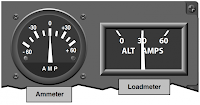 Ammeter monitors performance of electrical system - shows if alternator or generator is producing an adequate supply of power to the battery and other components.
Ammeter monitors performance of electrical system - shows if alternator or generator is producing an adequate supply of power to the battery and other components.
Loadmeters indicate a more direct indication of powered being supplied from the alternator to the electrical components.
Alternator Control Unit is composed of Voltage Regulator and OverVoltage Relay. Voltage Regulator controls rate of charge to battery by stabilizing electrical output from alternator/generator. Think of it as communication. Flaps need 15 amps. Voltage regulator sends 15 amps to the flaps. Voltage output will be higher than battery voltage to keep battery charged. Whatever isn't needed is grounded. If too much output is generated from alternator, overvoltage relay kicks in and trips alternator. Resetting alternator should correct the problem.
Hydraulic Systems
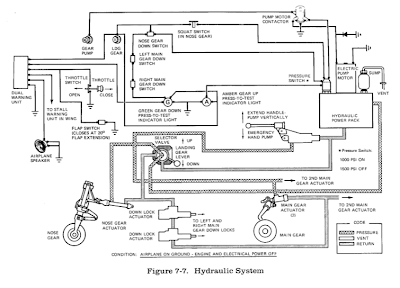 There are numerous applications of hydraulic power depending on complexity of the aircraft. It can operate wheel brakes, landing gear, and some constant speed propellers. On larger aircraft, it can be used to power flight control surfaces, wing flaps, and other systems.
There are numerous applications of hydraulic power depending on complexity of the aircraft. It can operate wheel brakes, landing gear, and some constant speed propellers. On larger aircraft, it can be used to power flight control surfaces, wing flaps, and other systems.
Basic hydraulic system consists of reservoir, pump, filter, and selector valve to control flow, and actuators.
Servos can be single-acting or double-acting. Mineral-based hydraulic fluid is most widely used type.
Landing Gear
Many GA aircraft have fixed landing gear, but more complex aircraft often use a hydraulically-powered system with actuators to send pressure up or down. Downlocks keep wheels locked in place while pressure (between 1000-1500 PSI) keeps wheels up.
Anti-Ice/Deice Systems
Anti-ice is used to protect against formation of ice. Deice exists to remove any ice that already is present. Most light aircraft only have carburetor heat and pitot heat to combat icing.
Airfoil Anti-Ice/Deice
Inflatable deicing boots consist of a rubber sheet bonded to leading edge of airfoil. When ice builds up on leading edge, an engine-driven pneumatic pump inflates the rubber boots. This inflation cracks the ice and hopefully forces it to fall off.
Thermal anti-ice systems direct hot air from compressor section of engine to leading edge surfaces.
Weeping Wings use holes in leading edge by pumping antifreeze solution through holes.
Windscreen anti-ice uses a flow of alcohol over the windscreen
Additionally windscreen heaters may be turned on electrically. This may cause some magnetic compass deviation if used.
Propeller Anti-Ice also use alcohol or heating elements.
14 or 28 volt direct current electrical systems. Volts are essentially potential energy. ie: Regardless of which items you turn on or off, the system will always consist of 28 volts.
Components
Alternator/Generator
Battery
Master/Battery Switch
Alternator/Generator Switch
Bus Bar, Fuses or Circuit Breakers
Voltage Regulator
Ammeter/Loadmeter
Associated electrical Wiring
An amp is a unit of current. So for example a landing light uses 15 amps to generate enough power to illuminate.
Knowing that battery is 24 volts or 12 volts is akin to knowing whether something needs AA or AAA batteries.
Bus Bars simplify wiring for voltage to be distributed.
Fuses/Circuit Breakers protect the circuits from electrical overload. The reason that amp numbers are listed on the circuit breakers is to determine how long we can operate the system using battery power only. In practice, it will be less than whatever we would calculate (based on how long it took to discover the failure followed by time required to troubleshoot).
 Ammeter monitors performance of electrical system - shows if alternator or generator is producing an adequate supply of power to the battery and other components.
Ammeter monitors performance of electrical system - shows if alternator or generator is producing an adequate supply of power to the battery and other components.Loadmeters indicate a more direct indication of powered being supplied from the alternator to the electrical components.
Alternator Control Unit is composed of Voltage Regulator and OverVoltage Relay. Voltage Regulator controls rate of charge to battery by stabilizing electrical output from alternator/generator. Think of it as communication. Flaps need 15 amps. Voltage regulator sends 15 amps to the flaps. Voltage output will be higher than battery voltage to keep battery charged. Whatever isn't needed is grounded. If too much output is generated from alternator, overvoltage relay kicks in and trips alternator. Resetting alternator should correct the problem.
Hydraulic Systems
 There are numerous applications of hydraulic power depending on complexity of the aircraft. It can operate wheel brakes, landing gear, and some constant speed propellers. On larger aircraft, it can be used to power flight control surfaces, wing flaps, and other systems.
There are numerous applications of hydraulic power depending on complexity of the aircraft. It can operate wheel brakes, landing gear, and some constant speed propellers. On larger aircraft, it can be used to power flight control surfaces, wing flaps, and other systems.Basic hydraulic system consists of reservoir, pump, filter, and selector valve to control flow, and actuators.
Servos can be single-acting or double-acting. Mineral-based hydraulic fluid is most widely used type.
Landing Gear
Many GA aircraft have fixed landing gear, but more complex aircraft often use a hydraulically-powered system with actuators to send pressure up or down. Downlocks keep wheels locked in place while pressure (between 1000-1500 PSI) keeps wheels up.
Anti-Ice/Deice Systems
Anti-ice is used to protect against formation of ice. Deice exists to remove any ice that already is present. Most light aircraft only have carburetor heat and pitot heat to combat icing.
Airfoil Anti-Ice/Deice
Inflatable deicing boots consist of a rubber sheet bonded to leading edge of airfoil. When ice builds up on leading edge, an engine-driven pneumatic pump inflates the rubber boots. This inflation cracks the ice and hopefully forces it to fall off.
Thermal anti-ice systems direct hot air from compressor section of engine to leading edge surfaces.
Weeping Wings use holes in leading edge by pumping antifreeze solution through holes.
Windscreen anti-ice uses a flow of alcohol over the windscreen
Additionally windscreen heaters may be turned on electrically. This may cause some magnetic compass deviation if used.
Propeller Anti-Ice also use alcohol or heating elements.
Engine Systems
All aircraft, except gliders, need some sort of powerplant to propel them forward. This is most often reciprocating engines (with propellers) or turbofan/turbojet engines (jets).
Reciprocating Engines
Thrust is produced through converting fuel energy into mechanical energy (combusition in the pistons). Ignition in these systems is either through spark ignition or compression. Or typically 4-stroke vs. 2-stroke. Engines can further be classified by
-Cylinder Arrangement (Radial, In-Line, V-Type, or Opposed)
-Operating Cycle (2 or 4)
-Method of Cooling (Liquid or Air)
Two Stroke Compression occurs when air forced into piston is compressed (raising temperature hot enough to ignite). Use of fuel injection and pressurized air is common to improve efficiency.
Spark Ignition (4-stroke) engines are more common. Magnetos are normally located on the engine accessory housing.
Propeller
The propeller itself is like a small wing - warped over its length in attempt to maintain a constant angle of attack. There are two common types - Fixed Pitch and Adjustable Pitch
Fixed Pitch Propellers - are set by manufacturer and cannot be changed by pilot or operator. The pitch setting is ideal for one aspect of flight such as climb or cruise. Its advantages are price, simplicity, and low weight.
Tachometer is used as indicator of engine power with fixed-pitch propeller. The RPM is controlled by the throttle which controls amount of fuel/air flow to the engine.
Adjustable Pitch Propellers - Automatically governed or pilot controlled adjustment of propeller pitch. It converts high percentage of brake horsepower into thrust horsepower. It is more efficient than a fixed pitch because it allows selection of most efficient engine RPM.
Throttle and Propeller control the engine. Throttle controls power output. Propeller control controls engine RPM.
A governor automatically adjusts propeller blade angle to maintain the selected rpm.
Power indicated by manifold pressure gauge, which measures pressure of fuel/air mixture inside intake manifold.
Avoid operating at high manifold pressure and low rpm.
Induction Systems
Induction deals with mixing air with fuel to allow for combustion. There are two common types - Carburetor Systems and Fuel Injection Systems
Carburetor - often float-type. Outside air flows through air filter and then into carburetor through a venturi in low-pressure area, drawing from a nozzle with it.
Carburetor Icing - The low-pressure area in the venturi causes fuel vaporization and decrease of air pressure - causing sharp drop in temperature. If water vapor is present, it can condense inside the carburetor forming ice. This then restricts fuel flow causing engine roughness.
Carburetor Heat - preheats the air prior to reaching the carburetor by routing air from an exhaust shroud. Heated air is also less dense resulting in loss of engine RPM combined with fact that water is now entering the engine.
Fuel Injection Systems - Fuel is injected directly into cylinders or just ahead of intake valve. System entails an engine-driven fuel pump, fuel/air control unit, fuel manifold, discharge nozzles, an auxiliary fuel pump, and fuel pressure/flow indicators.
Its advantages are that it is less susceptible to icing, and more precise control of mixture. However, vapor lock can occur on hot days and there can be difficulty starting a hot engine.

Superchargers/Turbochargers
Compress air to increase an engine's horsepower. It relies on engine-driven pump or compressor. Turbocharger gets power from exhaust stream that runs through a turbine, which spins a compressor.
This allows better higher altitude performance where air is less dense.
Ignition System - In spark ignition, a magneto provides the spark - composed of magnetos, spark plugs, high-tension leads, and the ignition switch.
Magneto uses a permanent magnet to generate an electrical current. It generates sufficiently high voltage to jump a spark across the spark plug gap in each cylinder.
During runup, if there is no rpm drop when selecting one magneto, there is a grounding problem. The engine could still start if the key was simply turned into the off position. This is why we shutdown with mixture.
Oil Systems
Oil serves several distinct purposes:
-Lubrication of engine's moving parts
-Cooling of engine by reducing friction
-Removing Heat from cylinders
-Provides seal between cylinder walls and pistons
-Carries away contaminants

There are two types of oil systems - Wet Sump and Dry Sump.
Wet Sump - Oil is located in a sump, an integral part of the engine.
Dry Sump - Oil is contained in a separate tank, and circulated through the engine by pumps.
Engine Cooling Systems
While oil plays an integral part, additional cooling is necessary. There are two main types of cooling systems - Air cooled and Liquid Cooled.
Air Cooled is accomplished by air flowing into engine from openings in the cowling. Baffles route the air to key components. Rear openings on cowling allow hot exhaust to flow out.
Cylinder Head Temp. Gauge is direct and immediate cylinder temperature change.
Exhaust Systems
Rather than their primary function of expelling burned combustion gases, they provide heat for the cabin and defrost the windscreen. Pipes are attached to cylinders.
For Cabin Heat, outside air is drawn into the air inlet and ducted through a shroud around the muffler. The heated air then ducted to cabin.
EGT gauges measure temp of gases at exhaust manifold. Temp. varies with ratio of fuel to air entering cylinders and can be used as guide for mixture control.
Starting System - Most small aircraft use direct cranking electric starter. Battery supplies electrical power for starting. Starter draws current from main bus bar, but solenoid needs to be energized by starter switch being turned to "start" position.
Combustion
Normal combustion is the controlled firing of the pistons in a predictable manner.
Detonation occurs when there is an explosive ignition within the chamber. It can cause an excessive rise in temperature and pressure. Common causes are low grade of fuel, operating with too high manifold and low rpm, operating too lean, extended steep climbs
Preignition is the ignition of the fuel/air mixture prior to the normal ignition. Often caused by a residual hotspot from a carbon deposit on a spark plug or other cylinder damage. Also produces high operating temperatures and excessive pressure on cylinder.
FADEC systems monitor status of each cylinder. Computers calculate performance and adjust timing to achieve optimal performance.
Turbine Engines
These engines have high power to weight ratios and use jet fuel. They are classified according to type of compressor - Centrifugal Flow, Axial Flow, and Centrifugal-Axial flow. The path the air takes to the engine determines type of engine. There are 4 types: Turbojet, Turboprop, Turbofan, and Turboshaft
Turbojet - consists of compressor, combustion chamber, turbine section, and exhaust. They are limited in range and endurance and slow to respond to throttle changes.
Turboprop - Turbine engine driving a propeller through a reduction gear. They are fuel efficient and low cost compared to other turbine engines.
Turbofan - developed to combine best features of turbojet and turboprop. Create additional thrust by diverting a secondary airflow around combustion chamber. Turbofan bypass air generates increased thrust, cools the engine, and aids in exhaust noise suppression. Provides turbojet cruise speeds with lower fuel consumption.
Air inlet often divided into two separate streams of air
Turboshaft - delivers power to a shaft that drives something other than a propeller. Main difference between turbojet and turboshaft is that it produces energy by expanding gases to drive a turbine rather than produce thrust. This type of powerplant is often found in helicopters or as APUs on larger aircraft.

Fuel Systems - need to be designed to provide uninterrupted fuel flow. There are two common classifications: gravity-fed and fuel-pump driven
Gravity-Fed - Like it sounds like, force of gravity transfers fuel from tanks to engine. Common on high-wing aircraft.
Fuel-Pump System - Two fuel pumps. Main pump is engine driven with electrically driven aux pump for use in engine starting and emergencies.
Primer - Draws fuel from tanks to vaporize fuel directly into the cylinders prior to starting the engine.
Fuel Tanks - The tanks themselves are usually inside the wings. The tanks must be vented to the outside to maintain atmospheric pressure inside the tank. There is also an overflow drain to allow changes in temperature without pressure on the tanks themselves.
Fuel passes through a strainer which removes any moisture and other sediments and contaminants settle in a sump at the bottom of the strainer assembly.
Fuel Grades
AVGAS is identified by an octane or performance grade which designates the antiknock value or knock resistance of the fuel mixture in the cylinders. The higher the grade, the more pressure the fuel can withstand without detonating. Higher grades ignite at higher temperatures. Avoid using a grade lower as a substitute.
Dyes are added to help identify type and grade.
Reciprocating Engines
Thrust is produced through converting fuel energy into mechanical energy (combusition in the pistons). Ignition in these systems is either through spark ignition or compression. Or typically 4-stroke vs. 2-stroke. Engines can further be classified by
-Cylinder Arrangement (Radial, In-Line, V-Type, or Opposed)
-Operating Cycle (2 or 4)
-Method of Cooling (Liquid or Air)
Two Stroke Compression occurs when air forced into piston is compressed (raising temperature hot enough to ignite). Use of fuel injection and pressurized air is common to improve efficiency.
Spark Ignition (4-stroke) engines are more common. Magnetos are normally located on the engine accessory housing.
Propeller
The propeller itself is like a small wing - warped over its length in attempt to maintain a constant angle of attack. There are two common types - Fixed Pitch and Adjustable Pitch
Fixed Pitch Propellers - are set by manufacturer and cannot be changed by pilot or operator. The pitch setting is ideal for one aspect of flight such as climb or cruise. Its advantages are price, simplicity, and low weight.
Tachometer is used as indicator of engine power with fixed-pitch propeller. The RPM is controlled by the throttle which controls amount of fuel/air flow to the engine.
Adjustable Pitch Propellers - Automatically governed or pilot controlled adjustment of propeller pitch. It converts high percentage of brake horsepower into thrust horsepower. It is more efficient than a fixed pitch because it allows selection of most efficient engine RPM.
Throttle and Propeller control the engine. Throttle controls power output. Propeller control controls engine RPM.
A governor automatically adjusts propeller blade angle to maintain the selected rpm.
Power indicated by manifold pressure gauge, which measures pressure of fuel/air mixture inside intake manifold.
Avoid operating at high manifold pressure and low rpm.
Induction Systems
Induction deals with mixing air with fuel to allow for combustion. There are two common types - Carburetor Systems and Fuel Injection Systems
Carburetor - often float-type. Outside air flows through air filter and then into carburetor through a venturi in low-pressure area, drawing from a nozzle with it.
Carburetor Icing - The low-pressure area in the venturi causes fuel vaporization and decrease of air pressure - causing sharp drop in temperature. If water vapor is present, it can condense inside the carburetor forming ice. This then restricts fuel flow causing engine roughness.
Carburetor Heat - preheats the air prior to reaching the carburetor by routing air from an exhaust shroud. Heated air is also less dense resulting in loss of engine RPM combined with fact that water is now entering the engine.
Fuel Injection Systems - Fuel is injected directly into cylinders or just ahead of intake valve. System entails an engine-driven fuel pump, fuel/air control unit, fuel manifold, discharge nozzles, an auxiliary fuel pump, and fuel pressure/flow indicators.
Its advantages are that it is less susceptible to icing, and more precise control of mixture. However, vapor lock can occur on hot days and there can be difficulty starting a hot engine.

Superchargers/Turbochargers
Compress air to increase an engine's horsepower. It relies on engine-driven pump or compressor. Turbocharger gets power from exhaust stream that runs through a turbine, which spins a compressor.
This allows better higher altitude performance where air is less dense.
Ignition System - In spark ignition, a magneto provides the spark - composed of magnetos, spark plugs, high-tension leads, and the ignition switch.
Magneto uses a permanent magnet to generate an electrical current. It generates sufficiently high voltage to jump a spark across the spark plug gap in each cylinder.
During runup, if there is no rpm drop when selecting one magneto, there is a grounding problem. The engine could still start if the key was simply turned into the off position. This is why we shutdown with mixture.
Oil Systems
Oil serves several distinct purposes:
-Lubrication of engine's moving parts
-Cooling of engine by reducing friction
-Removing Heat from cylinders
-Provides seal between cylinder walls and pistons
-Carries away contaminants

There are two types of oil systems - Wet Sump and Dry Sump.
Wet Sump - Oil is located in a sump, an integral part of the engine.
Dry Sump - Oil is contained in a separate tank, and circulated through the engine by pumps.
Engine Cooling Systems
While oil plays an integral part, additional cooling is necessary. There are two main types of cooling systems - Air cooled and Liquid Cooled.
Air Cooled is accomplished by air flowing into engine from openings in the cowling. Baffles route the air to key components. Rear openings on cowling allow hot exhaust to flow out.
Cylinder Head Temp. Gauge is direct and immediate cylinder temperature change.
Exhaust Systems
Rather than their primary function of expelling burned combustion gases, they provide heat for the cabin and defrost the windscreen. Pipes are attached to cylinders.
For Cabin Heat, outside air is drawn into the air inlet and ducted through a shroud around the muffler. The heated air then ducted to cabin.
EGT gauges measure temp of gases at exhaust manifold. Temp. varies with ratio of fuel to air entering cylinders and can be used as guide for mixture control.
Starting System - Most small aircraft use direct cranking electric starter. Battery supplies electrical power for starting. Starter draws current from main bus bar, but solenoid needs to be energized by starter switch being turned to "start" position.
Combustion
Normal combustion is the controlled firing of the pistons in a predictable manner.
Detonation occurs when there is an explosive ignition within the chamber. It can cause an excessive rise in temperature and pressure. Common causes are low grade of fuel, operating with too high manifold and low rpm, operating too lean, extended steep climbs
Preignition is the ignition of the fuel/air mixture prior to the normal ignition. Often caused by a residual hotspot from a carbon deposit on a spark plug or other cylinder damage. Also produces high operating temperatures and excessive pressure on cylinder.
FADEC systems monitor status of each cylinder. Computers calculate performance and adjust timing to achieve optimal performance.
Turbine Engines
These engines have high power to weight ratios and use jet fuel. They are classified according to type of compressor - Centrifugal Flow, Axial Flow, and Centrifugal-Axial flow. The path the air takes to the engine determines type of engine. There are 4 types: Turbojet, Turboprop, Turbofan, and Turboshaft
Turbojet - consists of compressor, combustion chamber, turbine section, and exhaust. They are limited in range and endurance and slow to respond to throttle changes.
Turboprop - Turbine engine driving a propeller through a reduction gear. They are fuel efficient and low cost compared to other turbine engines.
Turbofan - developed to combine best features of turbojet and turboprop. Create additional thrust by diverting a secondary airflow around combustion chamber. Turbofan bypass air generates increased thrust, cools the engine, and aids in exhaust noise suppression. Provides turbojet cruise speeds with lower fuel consumption.
Air inlet often divided into two separate streams of air
Turboshaft - delivers power to a shaft that drives something other than a propeller. Main difference between turbojet and turboshaft is that it produces energy by expanding gases to drive a turbine rather than produce thrust. This type of powerplant is often found in helicopters or as APUs on larger aircraft.

Fuel Systems - need to be designed to provide uninterrupted fuel flow. There are two common classifications: gravity-fed and fuel-pump driven
Gravity-Fed - Like it sounds like, force of gravity transfers fuel from tanks to engine. Common on high-wing aircraft.
Fuel-Pump System - Two fuel pumps. Main pump is engine driven with electrically driven aux pump for use in engine starting and emergencies.
Primer - Draws fuel from tanks to vaporize fuel directly into the cylinders prior to starting the engine.
Fuel Tanks - The tanks themselves are usually inside the wings. The tanks must be vented to the outside to maintain atmospheric pressure inside the tank. There is also an overflow drain to allow changes in temperature without pressure on the tanks themselves.
Fuel passes through a strainer which removes any moisture and other sediments and contaminants settle in a sump at the bottom of the strainer assembly.
Fuel Grades
AVGAS is identified by an octane or performance grade which designates the antiknock value or knock resistance of the fuel mixture in the cylinders. The higher the grade, the more pressure the fuel can withstand without detonating. Higher grades ignite at higher temperatures. Avoid using a grade lower as a substitute.
Dyes are added to help identify type and grade.
Weather Information / Systems
Weather services in the United States are complex effort by the National Weather Service, FAA, Department of Defense, and other weather agencies. This includes use of weather balloons, satellites, radar installations, and reporting stations at airports and elsewhere.
To obtain weather information, charts can be obtained through the NOAA or sites referencing this information. A briefing either through a site like DUATS or by calling a briefer at 1-800-WX-BRIEF.
Standard Briefing - contains all necessary information to plan a thorough preflight of weather.
Abbreviated Briefing - to update a previous briefing containing specific updates.
Outlook Briefing - if flight is 6 + hours away. Still need to update information prior to flight.
Observations
Observations on the surface, upper air, radar, and satellite constitute the basis for forecasts, and weather briefings.
Surface observations would include METARs through use of AWOS/ASOS systems
ARTCC (Air Route Traffic Control Center) is responsible for maintaining separation between IFR aircraft.
Upper Air Observations are gathered through weather balloons (radiosondes) that measure temperature and pressure as they rise as well as wind speed. PIREPS are another measure of real-time observations that can include turbulence, icing, and cloud tops.
Radar observations detect precipitation and wind shear.
Satellite observations contain real-time data of clouds and other weather phenomena
Service Outlets
Flight Service Stations - this is who you are calling when you dial 1-800-WX-Brief
DUATS - online method of gathering textual information on weather
En Route Flight Advisory Service (EFAS) - Frequency 122.0 MHz available when flying between 5,000 ft AGL and 17,500 ft MSL. between hours of 6am - 10pm. Provides information tailored to route of flight.
Hazardous Inflight Weather Advisory (HIWAS) - Broadcasts hazardous weather info over selected NAVAIDs such as VORs. This includes airmets, sigmets, convective sigmets, and urgent pireps.
Weather Reports
 METAR: Surface weather within 5 miles of an airport. Issued hourly unless significant weather change justifies SPECI.
METAR: Surface weather within 5 miles of an airport. Issued hourly unless significant weather change justifies SPECI.
EX: METAR KGGG 161753Z AUTO 14021G26 3/4SM +TSRA BR BKN008 OVC012CB 18/17 A2970 RMK PRESFR
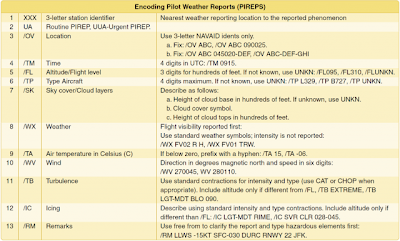
PIREPS: Pilot Reports on observed conditions that may vary from what is in official weather observations.
EX: UA/OV GGG 090025/TM 1450/FL 060/TP C182/SK 080 OVC/WX FV 04R/TA 05/WV 270030/TB LGT/RM HVY RAIN
RAREPS: Info on type, intensity, and location of echo top of precipitation. Also include altitudes of precip in MSL.
EX: TLX 1935 LN 8 TRW++ 86/40 199/115 20W C2425 MTS 570 AT 159/65 AUTO ^MO1 NO2 ON3 PM34 QM3 RL2=
Aviation Forecasts
Terminal Aerodrome Forecasts (TAF) - Established for the same 5sm radius as METARS, but usually only given at larger airports with significant commercial operations. Issued for 24-30 hour time period and updated 4x a day.
Ex: TAF KPIR 111130Z 111212 15012KT P6SM BKN090
TEMPO 1214 5SM BR
FM1500 16015G25KT P6SM SCT040 BKN250
FM0000 14012KT P6SM BKN080 OVC150 PROB40 0004 3SM TSRA BKN030CB
FM0400 1408KT P6SM SCT040 OVC080 TEMPO 0408 3SM TSRA OVC030CB BECMG 0810 32007KT=
Area Forecasts (FA) - Generates a picture of clouds, general weather conditions, and meteorological conditions expected over a very large area. There are 6 areas of the 48 states. Area forecasts are issued 3 x a day and valid for 18 hours.
Ex: 000
These then contain precautionary statements for IFR conditions, thunderstorm hazards and mountain obscurations.
Then a synopsis of the location and movement of pressure systems, fronts, and circulation patterns
Then VFR clouds and weather includes sky conditions and visibility for the next 12 hours and a 6 hour outlook.
Inflight Weather Advisories
Despite the name, these should be consulted prior to taking off, as they contain significant hazards to aircraft.
AIRMETs (WA) - issued every 6 hours and conditions considered hazardous especially to light aircraft. There are 3 types of Airmets = SIERRA, TANGO, and ZULU
Sierra for mountain obscurations
Tango for Turbulence
Zulu for icing
SIGMETs - (WS) considered hazardous to all aircraft. They are issued as needed, but valid for 4 hours. If related to hurricanes, it is valid for 6 hours. They are issued under alphabetic identifier from November through Yankee (not Sierra and Tango to avoid confusion)
Convective SIGMETs (WST) - Weather advisory issued for convective activity such as severe thunderstorms with high surface winds, hail greater than 3/4" diameter, or tornadoes. Issued 55 mins past the hour and valid for 2 hours.
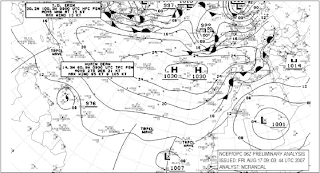 Winds and Temperature Aloft (FD) - Wind/Temp. forecasts for specific locations. Issued twice a day and based on radiosonde (weather balloon) observations taken at 0000Z and 1200Z. No winds are forecast when given level is within 1500 ft of station elevation. Temps not forecast within 2500 ft of station elevation.
Winds and Temperature Aloft (FD) - Wind/Temp. forecasts for specific locations. Issued twice a day and based on radiosonde (weather balloon) observations taken at 0000Z and 1200Z. No winds are forecast when given level is within 1500 ft of station elevation. Temps not forecast within 2500 ft of station elevation.
Weather Charts
These are a graphic depiction of current or forecast weather. They typically show movement of systems and fronts.
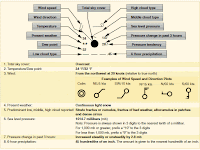 Surface Analysis Chart - Current surface weather. Transmitted every 3 hours. Shows pressure systems, fronts, temps, dewpoints, wind directions and speeds. All station models are present indicating sky cover and clouds.
Surface Analysis Chart - Current surface weather. Transmitted every 3 hours. Shows pressure systems, fronts, temps, dewpoints, wind directions and speeds. All station models are present indicating sky cover and clouds.
Weather Depiction Charts - details surface conditions derived from METAR and other sources. Transmitted every 3 hours beginning at 0100Z time and valid at time of plotted data. Displays major fronts, areas of pressure and displays IFR, VFR, and MVFR weather. Station symbols display sky cover, cloud height/ceiling, but not winds or pressure readings. A bracket to the right of the station indicates that observation was automated.
Radar Summary Chart - Graphical depiction of collected radar weather reports. Published hourly at 35 minutes after the hour. Displays areas of precipitation and characteristics. Has contours depicting intensities and height of tops in MSL. Movement, type, and weather watches also depicted.
Significant Weather Prognostic Charts - Available for Surface to FL 240 and High-Level significant weather from FL 250 to FL 600. Comes in 2 forms: 12 and 24 hour forecast chart and 36/48 hour surface forecast chart. First is a f4 panel chart. Issued 4x a day and valid for time printed in lower left cornel of panel. Upper panels show significant weather. Lower panels show forecast surface weather and systems/fronts etc.
The 36/48 hour prog chart is issued twice a day.
ARTCC Facilities cannot determine presence of clouds, but can see intensity of precipitation area.
Weather Avoidance
Controllers may be able to help you avoid severe weather, but remember it is not their first priority, which is to separate traffic
To obtain weather information, charts can be obtained through the NOAA or sites referencing this information. A briefing either through a site like DUATS or by calling a briefer at 1-800-WX-BRIEF.
Standard Briefing - contains all necessary information to plan a thorough preflight of weather.
Abbreviated Briefing - to update a previous briefing containing specific updates.
Outlook Briefing - if flight is 6 + hours away. Still need to update information prior to flight.
Observations
Observations on the surface, upper air, radar, and satellite constitute the basis for forecasts, and weather briefings.
Surface observations would include METARs through use of AWOS/ASOS systems
ARTCC (Air Route Traffic Control Center) is responsible for maintaining separation between IFR aircraft.
Upper Air Observations are gathered through weather balloons (radiosondes) that measure temperature and pressure as they rise as well as wind speed. PIREPS are another measure of real-time observations that can include turbulence, icing, and cloud tops.
Radar observations detect precipitation and wind shear.
Satellite observations contain real-time data of clouds and other weather phenomena
Service Outlets
Flight Service Stations - this is who you are calling when you dial 1-800-WX-Brief
DUATS - online method of gathering textual information on weather
En Route Flight Advisory Service (EFAS) - Frequency 122.0 MHz available when flying between 5,000 ft AGL and 17,500 ft MSL. between hours of 6am - 10pm. Provides information tailored to route of flight.
Hazardous Inflight Weather Advisory (HIWAS) - Broadcasts hazardous weather info over selected NAVAIDs such as VORs. This includes airmets, sigmets, convective sigmets, and urgent pireps.
Weather Reports
 METAR: Surface weather within 5 miles of an airport. Issued hourly unless significant weather change justifies SPECI.
METAR: Surface weather within 5 miles of an airport. Issued hourly unless significant weather change justifies SPECI.EX: METAR KGGG 161753Z AUTO 14021G26 3/4SM +TSRA BR BKN008 OVC012CB 18/17 A2970 RMK PRESFR

PIREPS: Pilot Reports on observed conditions that may vary from what is in official weather observations.
EX: UA/OV GGG 090025/TM 1450/FL 060/TP C182/SK 080 OVC/WX FV 04R/TA 05/WV 270030/TB LGT/RM HVY RAIN
RAREPS: Info on type, intensity, and location of echo top of precipitation. Also include altitudes of precip in MSL.
EX: TLX 1935 LN 8 TRW++ 86/40 199/115 20W C2425 MTS 570 AT 159/65 AUTO ^MO1 NO2 ON3 PM34 QM3 RL2=
Aviation Forecasts
Terminal Aerodrome Forecasts (TAF) - Established for the same 5sm radius as METARS, but usually only given at larger airports with significant commercial operations. Issued for 24-30 hour time period and updated 4x a day.
Ex: TAF KPIR 111130Z 111212 15012KT P6SM BKN090
TEMPO 1214 5SM BR
FM1500 16015G25KT P6SM SCT040 BKN250
FM0000 14012KT P6SM BKN080 OVC150 PROB40 0004 3SM TSRA BKN030CB
FM0400 1408KT P6SM SCT040 OVC080 TEMPO 0408 3SM TSRA OVC030CB BECMG 0810 32007KT=
Area Forecasts (FA) - Generates a picture of clouds, general weather conditions, and meteorological conditions expected over a very large area. There are 6 areas of the 48 states. Area forecasts are issued 3 x a day and valid for 18 hours.
Ex: 000
FAUS46 KKCI 031045 FA6W SFOC FA 031045 SYNOPSIS AND VFR CLDS/WX SYNOPSIS VALID UNTIL 040500 CLDS/WX VALID UNTIL 032300...OTLK VALID 032300-040500 WA OR CA AND CSTL WTRS . SEE AIRMET SIERRA FOR IFR CONDS AND MTN OBSCN. TS IMPLY SEV OR GTR TURB SEV ICE LLWS AND IFR CONDS. NON MSL HGTS DENOTED BY AGL OR CIG. . SYNOPSIS...ALF..LRG RDG CNTRL CA-S CNTRL U.S. TROF LOW SE ALTA-SE ID. LOW CA/MEX BDR. RDG NERN BC-HIGH N45W140. 05Z RDG N HLF CA-S CNTRL U.S. TROF SW MAN-SE MT-SW WY. RDG NERN ALTA-HIGH WA CSTL WTRS. LOW S CA CSTL WTRS. SFC..CDFNT LOW SE ID-XTRM NW NV. TROF NW CA-SAN JOAQUIN VLY. 05Z CDFNT NW CO-LOW CNTRL UT- CNTRL NV. TROF W OR-NW CA-W CNTRL CA- SW CA.
•
SRN CA..VBG-NID-60NNW BIH LN SWD CSTL SXNS - NW LAX...OVC010 TOP 015. VIS 4SM BR. BECMG 1921 SCT010 BKN CI. OTLK...VFR. LAX-40N MZB...OVC010 TOP 020 CSTLN. SCT CI ELSW. 12Z OVC010. VIS 4SM BR HZ. BECMG 1618 SCT CI. OTLK...VFR. 40N MZB-MEX BDR...OVC010 TOP 020 CSTLN. SCT CI ELSW. BECMG 1719 SCT015 CSTLN. OTLK...VFR. BECMG 0304 MVFR CIG CSTLN. INLAND-INTR MTNS...SCT CI. OTLK...VFR. DESERTS...SCT CI. 20Z SCT160. OCNL SCT100. 22Z ISOL -TSRA. CB TOP FL430. OTLK...VFR. IMPERIAL-COACHELLA VLYS...SCT CI. OTLK...VFR.
These then contain precautionary statements for IFR conditions, thunderstorm hazards and mountain obscurations.
Then a synopsis of the location and movement of pressure systems, fronts, and circulation patterns
Then VFR clouds and weather includes sky conditions and visibility for the next 12 hours and a 6 hour outlook.
Inflight Weather Advisories
Despite the name, these should be consulted prior to taking off, as they contain significant hazards to aircraft.
AIRMETs (WA) - issued every 6 hours and conditions considered hazardous especially to light aircraft. There are 3 types of Airmets = SIERRA, TANGO, and ZULU
Sierra for mountain obscurations
Tango for Turbulence
Zulu for icing
SIGMETs - (WS) considered hazardous to all aircraft. They are issued as needed, but valid for 4 hours. If related to hurricanes, it is valid for 6 hours. They are issued under alphabetic identifier from November through Yankee (not Sierra and Tango to avoid confusion)
Convective SIGMETs (WST) - Weather advisory issued for convective activity such as severe thunderstorms with high surface winds, hail greater than 3/4" diameter, or tornadoes. Issued 55 mins past the hour and valid for 2 hours.
 Winds and Temperature Aloft (FD) - Wind/Temp. forecasts for specific locations. Issued twice a day and based on radiosonde (weather balloon) observations taken at 0000Z and 1200Z. No winds are forecast when given level is within 1500 ft of station elevation. Temps not forecast within 2500 ft of station elevation.
Winds and Temperature Aloft (FD) - Wind/Temp. forecasts for specific locations. Issued twice a day and based on radiosonde (weather balloon) observations taken at 0000Z and 1200Z. No winds are forecast when given level is within 1500 ft of station elevation. Temps not forecast within 2500 ft of station elevation.Weather Charts
These are a graphic depiction of current or forecast weather. They typically show movement of systems and fronts.
 Surface Analysis Chart - Current surface weather. Transmitted every 3 hours. Shows pressure systems, fronts, temps, dewpoints, wind directions and speeds. All station models are present indicating sky cover and clouds.
Surface Analysis Chart - Current surface weather. Transmitted every 3 hours. Shows pressure systems, fronts, temps, dewpoints, wind directions and speeds. All station models are present indicating sky cover and clouds.Weather Depiction Charts - details surface conditions derived from METAR and other sources. Transmitted every 3 hours beginning at 0100Z time and valid at time of plotted data. Displays major fronts, areas of pressure and displays IFR, VFR, and MVFR weather. Station symbols display sky cover, cloud height/ceiling, but not winds or pressure readings. A bracket to the right of the station indicates that observation was automated.
Radar Summary Chart - Graphical depiction of collected radar weather reports. Published hourly at 35 minutes after the hour. Displays areas of precipitation and characteristics. Has contours depicting intensities and height of tops in MSL. Movement, type, and weather watches also depicted.
Significant Weather Prognostic Charts - Available for Surface to FL 240 and High-Level significant weather from FL 250 to FL 600. Comes in 2 forms: 12 and 24 hour forecast chart and 36/48 hour surface forecast chart. First is a f4 panel chart. Issued 4x a day and valid for time printed in lower left cornel of panel. Upper panels show significant weather. Lower panels show forecast surface weather and systems/fronts etc.
The 36/48 hour prog chart is issued twice a day.
ARTCC Facilities cannot determine presence of clouds, but can see intensity of precipitation area.
Weather Avoidance
Controllers may be able to help you avoid severe weather, but remember it is not their first priority, which is to separate traffic
Subscribe to:
Posts (Atom)

